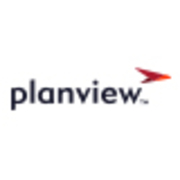What is our primary use case?
They have the PRM portion and the CTM portion. We predominantly use the PRM portion. We have installed the CTM portion, but we have not put it into production. We concentrate mostly on the PRM portion. Within the PRM, we use the Strategy module, the Planning module, the Work module, and the Resource module.
Our production has the July 2021 release. We typically take two to three months to upgrade. We are in the process of upgrading to the October release at the end of the month.
How has it helped my organization?
Its view into resource capacity and availability helps us in managing work. It helps our management team to see where the demand is and whether we have the capacity, which allows us to ramp up and ramp down so that we do not have any constraints. Even if we have the budget, we might not have the resources to fulfill the demand. So, that gap has greatly reduced for us.
It allows us to create summary reports across multiple projects. They have provided reports, and we also develop our own reports for certain specific needs of our business. Because we are on-prem, we have the ability to create those custom reports within our own environment. There has been no issue with what we want, and we're getting that information. These summary reports help us a lot in sharing the big picture with the management. There is visual and graphical information that we can drill into. We can see how things are happening and dig into the raw data that is feeding the charts.
It has helped with the prioritization of projects through alignment with our strategic objectives. We use the Strategy module, the Planning module, and the Work module to get that visibility. About five or six years ago, we used to do all of this in spreadsheets. We had to maintain multiple versions of those spreadsheets, and we would miss things. The result used to come to us, and then we had a huge amount of work at hand to replicate all of that into Planview where we were only using the Work module. Planview has replaced all those spreadsheets, and with the additional improvements that Planview is making and where it is right now, we can bring into place both agile and hybrid models of project management. In a short time, we were able to wean our users away from spreadsheets. The system is supporting them. So, there is one source of truth.
It provides various types of resource assignments for assigning work to people. We do demand management for when a project comes in and there is an ask for funding and different types of resources. So, we make use of both the requirements and reservations.
It increases our on-time completion rate. When a particular project extends or crashes, it gives us visibility on the demand within a particular month, which helps in managing our teams. If there is a requirement for an additional resource, they can bring someone in. They can also move someone out. Projects are not an island. There are multiple projects, and a task of one project may be dependent on another task or other projects. Planview gives us the ability to link tasks from one project to the other project. Their Dependency Management module provides visibility to the program managers and the project managers who are managing those individual projects. They are able to see where the demand is and their bottlenecks, which helps them in better management. We have seen our project teams having more success. We have never seen any kind of surprises and delays. People know in advance if there is going to be a delay because of its features. When some task gets finished sooner, other project teams get to know that they can start their task sooner. This way, our time-to-delivery has actually improved.
What is most valuable?
We have different users for different modules. We manage programs and portfolios by using the Strategy module. Our project teams predominantly use the Work module. Our resource management team uses the Resource module and RMA to manage resources capacity, demand, etc. So, each of the modules is important for the respective people. We have a yearly planning process, and we use the Planning module to a certain extent to do the portfolio creation work.
RMA has been really good for forecasting the remaining effort. Planview has been making a lot of improvements. The recent improvement that they have done to provide visibility to the actual timesheets that are submitted has been really good. The roadmap that Planview has and the way they're continuously and quickly improving and providing solutions have been very positive for us. We know that we don't have to wait for six months to realize the benefits of their development. From the delivery point of view, that has been one of the best things about Planview.
It helps our management team in planning resource capacity and availability pretty nicely. We've been doing this for over two years now, and consistently, it has improved. Even though the functionality was there, we only started using it in the last two years. We provided whatever feedback we had to the Planview team, and they went in and built those additional features that we requested. For example, they created a great way for our users to search for a specific resource, project, program, or role. We were not using some of the features, and we wanted them to not be visible, and they helped us with that. They also brought a feature to provide visibility into when a resource was never assigned to any task. There was no visibility to this before. This feature was really very good for visibility into the resource portfolio. If we have about 60 resources, and four of them have never been assigned to any task or any project, we can see that. So, the search option and the visibility into the resources that have not been assigned are the quick features that they provided.
What needs improvement?
We've been encouraging our users to manage their schedules directly in the Work and Assignments module. So far, it has been good, but we've been in conversation with the vendor product team to improve the performance of the Work and Assignments module. Right now, it is a bit slower.
We don't use the Progression feature. We will use it at some point in time. Until then, we want to have a way to set time to help decide what's in the past, present, and future. It is one of the things we've been discussing with Planview.
It provides flexibility for configuring assignments, but one of the things about which we've been talking to Planview is related to certain resources that are associated with a project. When the project extends, their demand also equally goes up. There are also resources where if a particular task has to crash, it may need additional effort. So, it is between the fixed effort versus fixed duration. Planview is more duration-based. For example, if you crash a task, the system rightly thinks that you're crashing the task, and you need to finish the work by doing overtime or working additional hours. If you are taking 30 hours to finish a task in three weeks, and for whatever reason, you have to crash the task into two weeks, 30 hours need to be fulfilled within those two weeks. If the task moves to four weeks, instead of three weeks, you still have 30 hours that get distributed among four weeks, so you will be able to finish the task. That makes sense for those resources that are associated with the task, but there are certain resources, such as a project manager or project administrator, for whom when a project extends, the demand also equally goes up. So, if somebody is assigned 50% for a project, and assuming that the project is moving out by a month or two or three months, the effort shouldn't go down. Currently, the allocation goes down, and our resource managers have to go and update the effort back up to 50% or whatever the demand is. We are interacting with Planview to provide a solution. Right now, we have to go and update the additional demand because of the change in the project.
For how long have I used the solution?
We've been using Planview since 2010. It wasn't called Enterprise One then. In 2010, it was still called Planview. It became Enterprise One a few years ago when they changed the platform to include the CTM portion.
How are customer service and support?
They have been excellent. They're very accessible. I would give their support team the highest rating because of the way they respond. Most of the time, the issue gets resolved within the same day. If not, it is resolved the next day. We've been very happy with their support system.
Which solution did I use previously and why did I switch?
We were using Business Engine Network before we moved to Planview. Business Engine Network was bought over by Planview.
Until about a year and a half ago, our users used to use Microsoft Project for schedules, and they used to update the schedule into Planview on a regular basis, at least once a week. Of late, we have started to move to Planview for full work resource management. We've been encouraging our users to manage their schedules directly in the Work and Assignments module.
In my previous work experience, I have mostly used Microsoft Project and some of the products that Microsoft gave. At one point in time, I used Rational, but that was mostly from the software development management point of view.
Which other solutions did I evaluate?
I wasn't part of the team. I joined in 2010, and all the discussions and evaluations happened in 2009. All I know is that our company went in and looked at all the other products that were available at that time, and then they decided that Planview would be a better solution. It has been one of the very good decisions the company has made. We've been using it for close to 11 years.
What other advice do I have?
Overall, it has been a good tool. Based on my conversations with other users and colleagues who moved from other organizations, I would rate it higher than other solutions.
In a way, it provides end-to-end work management for the full spectrum of types of work in one tool. Our IT team uses different systems. They use Jira and another home-grown system. We have done integration with some of the IT systems that they use, and we are also planning to integrate with Jira, which is critical for us to do. Right now, we have a way to integrate that information, and we are making use of it, but we are looking at seamless integration with Jira. Our IT teams are looking at updating and moving some of their work into Jira for easy management, and that's where this whole end-to-end solution would become a reality, but the integration that we currently have is meeting the expectations of our users as well as the business.
I would rate it a nine out of 10. There is always room for improvement, and Planview is constantly making changes. We've been a part of their inner circle programs where we provide our feedback, and they look at our requests. They have been great in terms of looking at those requests.
Which deployment model are you using for this solution?
On-premises
*Disclosure: PeerSpot contacted the reviewer to collect the review and to validate authenticity. The reviewer was referred by the vendor, but the review is not subject to editing or approval by the vendor.



